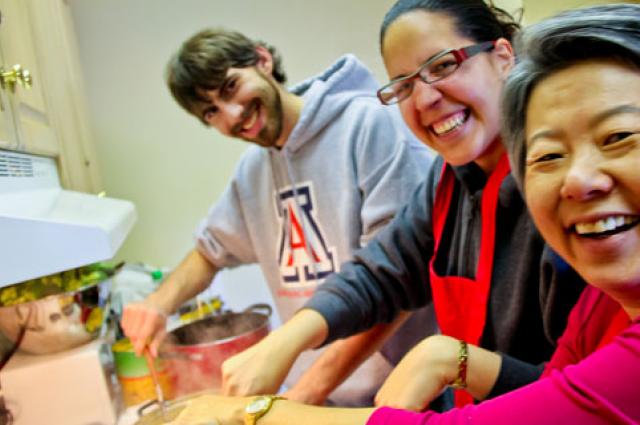Pioneering Champion of Diversity in STEM Reflects on 25-Year Career
As the youngest of four daughters raised in Thailand, Supapan Seraphin recalls how local women pitied her mother because she had no sons. In an era when a woman’s place was in the home, they were puzzled by her mother’s resolve that all of her daughters would be educated.
Seraphin earned bachelor’s and master’s degrees in chemistry and energy technology in Thailand before coming to America to earn her doctorate in materials science and engineering from Arizona State University in 1990.
Later that year she joined the University of Arizona department of materials science and engineering as its first female faculty member and as the first director of what is now the UA Spectroscopy and Imaging Facilities. She also held joint appointments in agriculture and biosystems engineering and in the College of Optical Sciences, where her late husband, Bernhard Seraphin, was professor emeritus of physics.
As principal or co-principal investigator on National Science Foundation grants totaling about $10 million, Seraphin has conducted research on nanomaterials and led education and outreach grants to extend research opportunities to pre-college, undergraduate and graduate students -- particularly women and members of minority groups -- and science teachers.
She shared her passion for research and discovery in classrooms, laboratories and many other settings -- most memorably, perhaps, in residence hall kitchens.
Nourishing Ideas and Communities
With funding as a UA Faculty Fellow, Seraphin cooked up her mother’s recipe for Thai curry every Friday for first-year students in a campus residence hall. Four students sat down to lunch together that first Friday in 2001. Last year, up to 100 students gathered weekly to share spicy homemade meals and stimulating ideas.
Upon her retirement from the University in May 2016, Arizona Engineer asked Seraphin about highlights of her UA career and plans for the future.
Arizona Engineer: What are some of your fondest memories at the UA?
Supapan Seraphin: When pre-college students and K-12 teachers would tell me I provided them with life-changing experiences. When I heard the news that one of my students had received a National Science Foundation Graduate Research Fellowship. When students in my department voted for me to receive the Excellence at Student Interface Award -- four times. Interacting with students at our weekly community lunches. The culminating event was, of course, when I received the University of Arizona Distinguished Outreach Faculty Award in 2014.
AE: What have been the most exciting advances in materials science engineering since you entered the field?
SS: First, the discovery of high-temperature superconductors, while I was getting my PhD; and, secondly, carbon 60 and carbon nanotubes. The year I started working at the UA, Donald Huffman [now professor emeritus in physics] announced he had produced C60 in gram quantity. It was a very exciting time and place to carry out research in this hot, new field.
AE: What remains the biggest challenge in science, technology, engineering and math, or STEM, education?
SS: Much has changed over the years, but one thing stays constant: It is a real challenge to engage young students in science and engineering and to make sure they will pursue and be successful in these fields.
AE: As a champion of diversity in STEM education around the world, what is your assessment?
SS: We do better with ethnic diversity than gender diversity. It is a slow process. We have made some gains, but it is slow.
AE: What are your plans? Are you truly retiring?
SS: I have accepted an advisory position at Thailand National Materials Technology Center in Bangkok. They have very high-end equipment and ongoing research projects where I can contribute. It is a welcoming next step for me to go back to my roots.


